
6 minute read
Retro film revival. p
REVELSTOKE AND THE REVIVAL OF RETRO
THE ANALOGUE AESTHETIC IS ENJOYING A RESURGENCE, AND A REVELSTOKE RESIDENT IS PROVIDING RESOURCES TO OUR RURAL COMMUNITY TO MAKE IT POSSIBLE. WE CONTACTED LOCAL ENTHUSIASTS TO LEARN WHY THEY LOVE FILM PHOTOGRAPHY.
By Nora Hughes.
It’s hard to understand the recent surge in film photography, a technology rendered obsolete by phones and digital cameras. Still, companies can’t keep up with the demand for 35mm film.
Kodak’s film finishing factory in Rochester, USA, hired over 350 new employees last year and put out a plea for 100 more to keep up with the increase in demand related to film photography. Fujifilm warns that their 35mm stock will be in short supply “for the time being” due to the resurgence in popularity and worldwide supply chain issues.
New films and cameras have even been made in response to the resurgence. The only problem is the price. According to Analogue Cafe — a site which collects data on film photography — the cost of film rose from USD $8.50 in November 2018 to $12.76 in February 2022.
Revelstoke photographer, Maxim B. Vidricaire, loves all things vintage, including film photography. He’s taking advantage of the resurgence of retro with his business Mountain Archives, which sells film and film cameras, retro outdoor wear and his own brand of clothing.
“It's a project I put together that takes three pillars, things I already love on a personal level. It’s film photography, vintage outdoor clothing, and a platform for new clothing, but done exceptionally well,” Maxim says about his e-commerce store. “I think there's been a huge resurgence, and not only film photography but also vintage outdoor clothing. And not just the idea of vintage but the idea of retro in general, [Mountain Archives] is a blending these worlds.”
Maxim thinks a few factors contribute to film photography’s resurgence.
“The two main ones I can think of are that a lot of people within this 20 to 40 range are kind of that phase in life where they have a little more disposable income,” he says. “It's also a way to hold on to your childhood in a way. Most of us have gone through an age of disposable cameras, or parents having an old film camera, and there is something nostalgic about the imperfection amongst these images.”
Finding film in Revelstoke
Shooting film in Revelstoke can be an especially expensive hobby. Finding film is the first hurdle.
Revelstoke’s Pharmasave discontinued film in 2011. Photolab Manager Andrew Moore says that ten years later, people are asking for the retro rolls again. They stock the occasional roll of Fujifilm, but the supply chain and demand issues mentioned earlier are problematic.
One of the most expensive parts of film photography is getting the rolls developed. Back when Pharmasave had a processor, it was easy. Nowadays, only drug stores in large cities like Kamloops and Kelowna develop film, and even then, black and white film often needs to be sent to a designated photo lab because the developing process is different than C-41 colour film. Most drug stores can’t justify the cost of equipment for both types.
“The problem is the processors,” says Moore. “You have to run a certain minimum of film through the processors to keep the chemicals alive.”
To justify buying a processor for Pharmasave’s photo lab in Revelstoke, Moore says they’d have to develop roughly 50 rolls of film a week.
Mountain archives
Maxim loves to geek out on film. He loves to shoot Kodak Gold, develops his own colour film, and always scans his own images. With a background in finance, he’s also a bit of a numbers nerd. Through his business, Mountain Archives, Maxim is providing resources for film enthusiasts.
“If you think about it, you're already paying 15 bucks for the roll,” he explains. “You're paying another $15 to $20 for processing and another $20 for shipping [to and from Revelstoke]. All of a sudden, your one roll of film from your holiday is like $50 or $60.”
When he posts his film photography from around Revelstoke, he’s flooded with messages from people asking where he gets his film developed.
Mountain Archives makes monthly bulk shipments to a designated lab in Kelowna called Valley Film Lab. This service eases the shipping prices that individuals typically face when mailing rolls from Revelstoke.
Mountain Archives also occasionally sells film cameras and stocks the coveted Kodak Gold 200.
In addition to Mountain Archives’ film assets, Maxim also offers a film-developing workshop at the Revelstoke Visual Arts Centre. He teaches the process, patience, and price to do it yourself.
In bringing these resources to Revelstoke, Maxim hopes to create a viable business from the film trend with a brand behind it. He hopes that one day, people will be able to search “film in Revelstoke,” and Mountain Archives will populate the page.
“There's a tendency to strive for perfection with digital image-making tools like phones or DSLRs, and we like to review that photo immediately,” says Maxim. “Then people want to redo stuff, and it takes away from the candidness. So the idea of slowing things down and really becoming more deliberate or thoughtful when you're taking the photo; I think that that's huge.”
For more on Maxim’s business, check out Mountain Archives on Instagram or mountainarchives.ca.
1
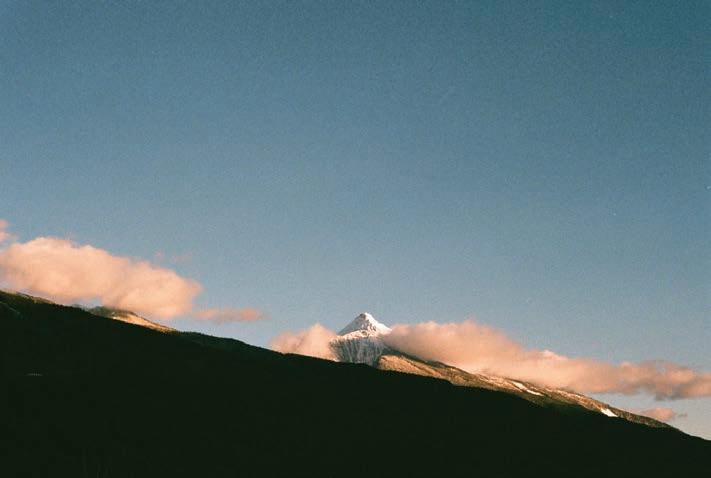
2
5

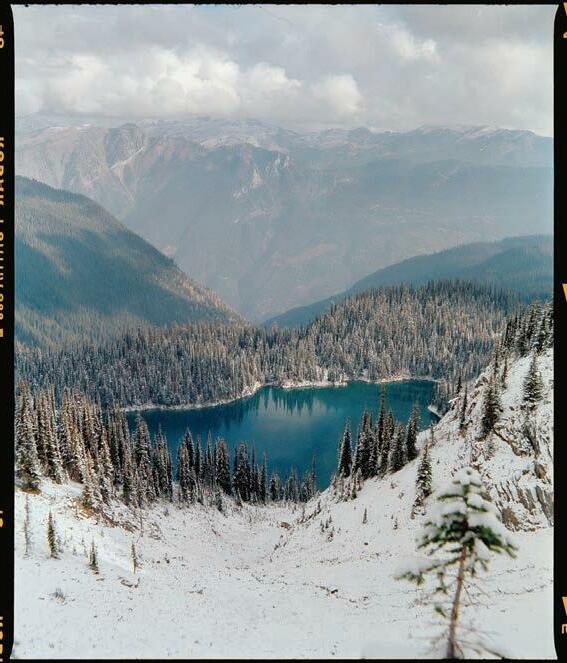
3 4
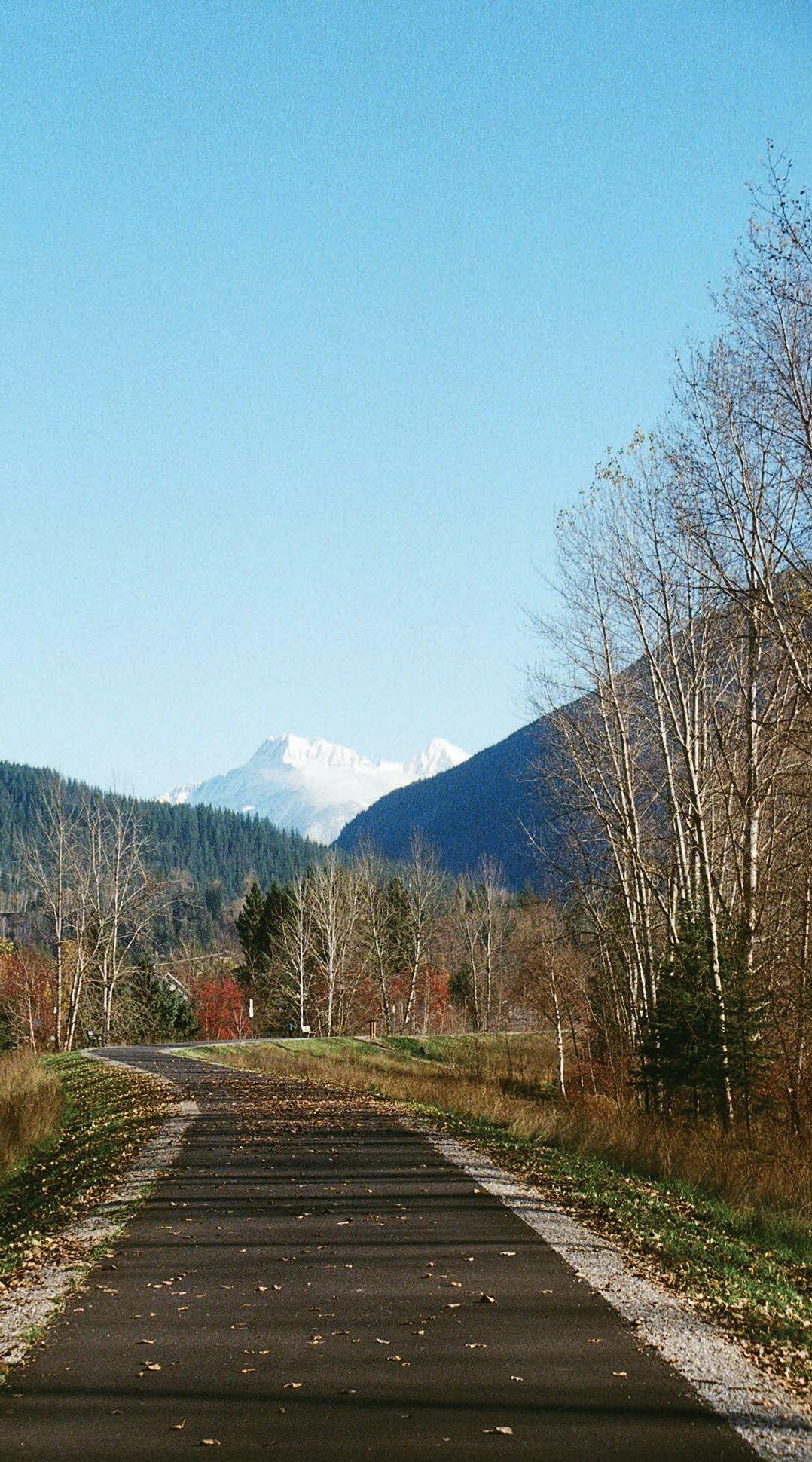
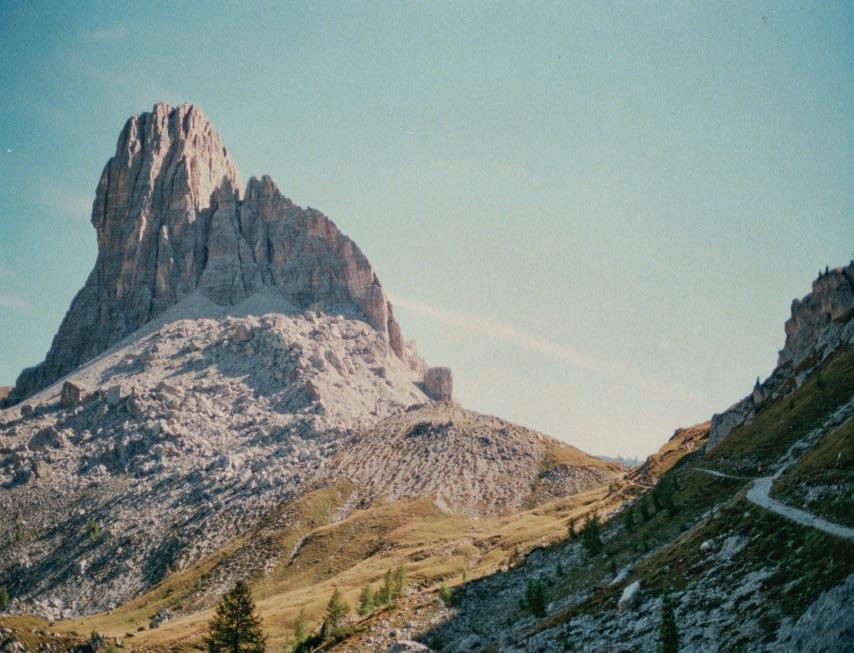

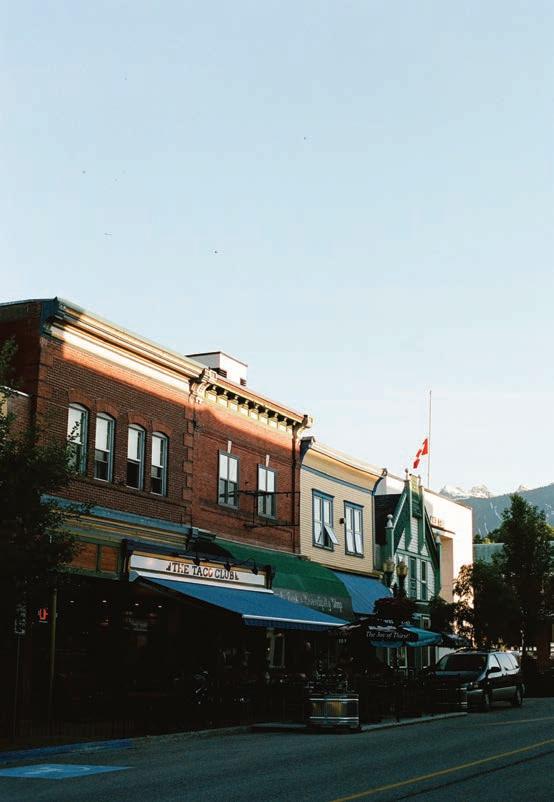
6
1. Adam Buchanan
The Roxy Theatre / Rogers Pass snowshed. Both were shot on Kodak Gold 200 “Being very intentional with each and every shot - going slow and appreciating the results.”
2. Phoebe Landers
“I do like the textures, but also the process of taking just one frame at a time and getting back a whole bunch of memories when I get a roll developed.”
3. Maxim B. Vidricaire
Lower McCrae Lake “Shooting on film allows me to be more present and deliberate with my image-making. You never know what you will get from the roll, and you might not get anything at all.”
4. Jack Ryan
Skiing Granddaddy couloir in the ice fields parkway. “The anticipation.”
5. Alex-Anne Flibotte
Beautiful view of the setting sunlight hitting the summit of McCrae “The film is unique in the way it makes you feel, the emotions it evokes, and the memories it can bring back. It forces you to slow down and be totally absorbed in the shot. And finally, it’s exciting! You easily forget what you’ve taken, and getting all these little gems back once the development is over is so cool.”
7
6. Lucia Galiotto
Cortina d'Ampezzo, 2021 “I really like how the analog camera can reproduce colours in such a different way but at the same time so authentic. Another aspect is that it manages to transfer the softness of the grass and the hardness of the rock, which I cannot find in the digital image instead.”
7. Connor Furneaux
Taken at Gahnįhthah Mie (Rabbitkettle Lake) in Nahanni National Park. Gahnįhthah Mie is where we ended our 12-day trip down the Pipp'enéh łéetoó Deé (Brokenskull River). On the last morning before we flew home we went for a paddle on the lake. The lake was very calm, making for a perfect reflection. Shot on Nikon FM2 Kodak Ultramax 400iso “As a photographer, it's so easy to hold the shutter and capture thousands of images. What I love about shooting film is that it really slows down the whole picture-taking process. Instead of just shooting everything, I am much more selective with the things that I want to shoot.”
8. Nolan Gale Downtown Revelstoke on 35mm Portra 400. “Love the colours, the fact that it makes me slow down and think about my shot more. Looking to get into medium format too for the same reasons.”



